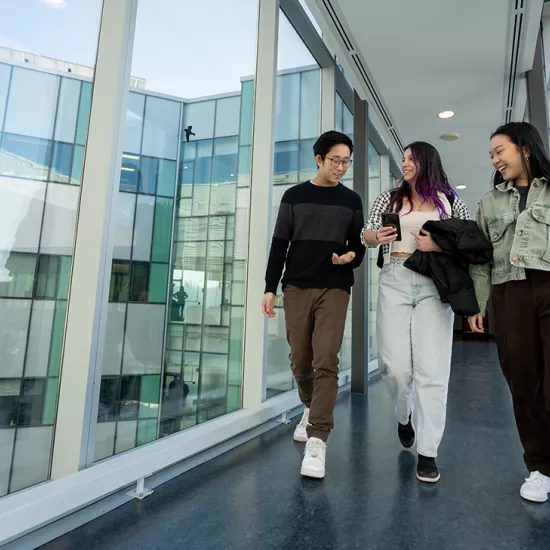Does 'diversity' work?

The concept of diversity has been celebrated and supported at major organizations and public institutions since the 1980s. It’s a widely supported ideal in contemporary society, but what if its unintended consequence is to perpetuate social and racial inequality? That’s the thorny question at the centre of UTM sociology professor Ellen Berrey’s research.
“Decision-makers in many social domains endorse diversity with an emphasis on the payoffs for everyone – it’s good for learning and good for business – rather than the goal of equality,” says Berrey, who arrived at UTM this summer from the University of Denver. She examines what she calls “the promises and pitfalls” of promoting diversity in environments such as universities, corporations and courtrooms. “I’m interested in organizational and legal efforts to remedy problems of inequality, and how these efforts actually play out on the ground,” she says.
While the term “diversity” covers many differences – including religion, sexual orientation and ability – Berrey says that race is the default assumption when people talk about diversity. “In the United States, the language of diversity comes directly out of race issues, especially the black-white divide.” Most of Berrey’s research focuses on the U.S. context.
There have been some important social reforms implemented in the name of diversity, she says, but they have been small and incremental. “Diversity communicates a shared commitment to the social good across differences that divide us. Yet there’s much more of an appearance of change than actual demonstrable change. The movement for diversity hasn’t undone some of the deeper, institutional conditions that reproduce inequality.”
In her 2015 book The Enigma of Diversity: The Language of Race and the Limits of Racial Justice, Berrey explores some of those entrenched discriminatory conditions in employment, university admissions and housing. Drawing on six years of fieldwork in a Fortune 500 company, a major American university and a Chicago neighbourhood, she argues that the public embrace of diversity hasn’t accomplished the social change required for racial justice.
The book won numerous awards, including the 2016 Herbert Jacob Book Prize from the Law and Society Association, and its thesis reached a large non-academic audience through an article she published on Salon.com in the fall of 2015. Titled “Diversity is for white people: The big lie behind a well-intended word,” it’s been shared 32,000 times to date.
The admissions process at American universities is a prime example of how the promise of diversity has fallen short, says Berrey, who continues to research decision-making and race in this arena. “Affirmative action has been instrumental in moving African-Americans into colleges and creating a black middle class in the US, but it doesn’t get at a fundamental barrier to equality in admissions – the reliance on standardized test scores.” These test scores reliably reflect parental income, she says, and students from higher-income, predominantly white families tend to score higher.
One of Berrey’s current research projects is investigating student anti-racism protests at both American and Canadian universities since 2012, when the Black Lives Matter movement rose to prominence. It’s a long-term project that aims to compare the protesters’ demands for policy change with any reforms enacted by university administrations.
As a newcomer to UTM, Berrey says she was interested to learn about the university’s Anti-Racism and Cultural Diversity Office. “I’ve never seen an anti-racism office at any other university. That’s meaningful.” She also points to the university’s support for the Truth and Reconciliation Commission’s recommendations as evidence of the administration’s “honest reckoning” with the complex issues of race and equality.



